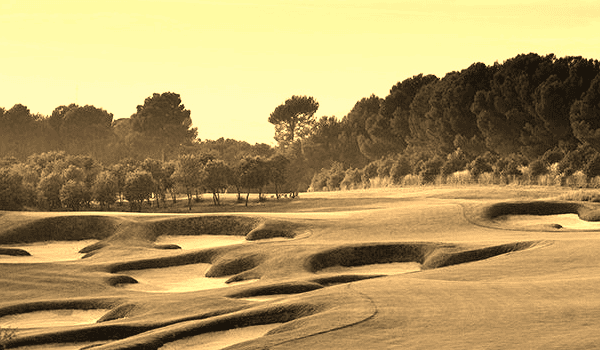
Swing Intentions – The Missing Piece for Great Golf
Ever thought that what professionals (or the awesome players at your club) are doing isn’t quite the same as what you’re doing? Ever wondered if you can accurately draw conclusions about someone’s swing by just watching it? Is what you do visible or understandable to someone else? Swing intentions are the centerpiece of every golf swing on the planet, and they’re the trickiest thing to digest. But when you get it right, you’ll find that “feeling golf is pretty easy mode.”
The correct intentions for the swing style you wish to perform are the missing piece between mediocre and exceptional golf.
Understanding this has fueled a ten-year-long search for what actually matters and how driving intentions can be learned and taught. I’ll “warn” you: this is a very dense read, and it’s obviously very subjective. Reading it twice should be beneficial.
Swing Intentions – Makes You Actively Move
How we subconsciously picture our motion (our inner image/perception), our intentions, along with our physical abilities and muscle memory, create a blend of influences for our golf motions. I could (and should) probably name five more components in this “smoothie,” but I’ll keep it brief.
The inner image evolves with knowledge and maturity. Muscle memory changes through skill training, and physical abilities improve with strength and flexibility training. However, intention is the one “moving part” in this mix. It’s the only element we can truly affect in the present moment.
Swing Intentions vs Observational Video Analysis
My absolute belief is that the “perfect golf swing” (if such a thing exists) was developed back in the 1920s-70s. Back then, you didn’t have a TrackMan or live video feed with you on every practice shot. You were completely reliant on how you felt. The only feedback you had was your intention and how it adapted to the ball flight. I actually grew up this way too, spending most of my free time on golf courses and grass driving ranges, reaching a 4 handicap at the age of 13. Then, I had my first lesson with video, where I was instructed to keep my wrists straight longer and to adjust this or that. My development stalled, and I even became a worse player. Sure, I made it down to a 1 handicap, but I was a much better golfer at 13 than at 19. I now understand that the instruction moved me away from the core intention that actually made my swing work. It wasn’t until my 30s, when I returned to golf, that I created a swing with enough contextual knowledge to start shooting well into the 60s. Compared to my youth, I trained a fraction of the time. (read my story here if you wish)
What I just described to you is, in my opinion, the biggest mistake in golf instruction: making too important conclusions based on observations. It can be done, but it takes a very select few coaches who are good enough to do it. Even worse, there are cases where conclusions about a golf swing are made without considering the intentions at all (like what I was instructed to do).
So, can you use video at all? Sure, you can. You can use it to polish the “paint job” of the car, but you can’t use it to describe the inner intentions that the player in front of you is using (unless you’ve spent 3000 hours watching with a learning mindset). Let me put it another way: if you’re a great golfer with nice subconscious intentions that deliver steady, controllable power output, you can use video anytime. Video feedback can be used to tweak the intentions that made your swing look the way it does, but you can’t tweak things outside of your intentions.
If you’re a golfer with “intentional flaws,” you’re playing with a broken engine. In that case, video analysis and observational advice will just discourage you from progressing in golf. Advice might help for a while, but ultimately, you need to fix the root of your problem — your intentional understanding of the swing style you’re trying to perform.
So, is it okay to give or receive small technical detail advice? Honestly, I’d be very careful when it comes to discussing something observational in golf. What you, as an instructor or DIY golfer, see in your own video is just the outcome of something else. If I cock my wrists too early in the backswing, is that truly an issue? And if I want to change it, do I instruct to keep the uncocked state longer, or do I instead focus on a different feel in the backswing that keeps the wrists uncocked longer? Always teach and instruct from the inner layer of the golf swing. Always focus on the driving elements because they will influence the other pieces.
Swing Intentions -> Swing Thoughts -> Swing Feels = Evolution
I’m no neuro scientist so take everything I write here with a grain of salt.
My interpretation of the words swing intention, swing thought and swing feel are the below:
- Swing Intentions = What you actually wish to accomplish with your golf swing in different areas of the swing. It’s not personal but a concept boiled down to simple swing directions in the form of an intention. In my opinion your intentions NEEDS to be stimulating the driving forces of a golf swing (the intentions that I teach are about the dynamic forces in the club since influencing these will make your body react).
- An intention would be to create a big downswing arc.
- Swing Thoughts = Now, these are your own. These should be aligned with your intention so that you act to create that desired intentional outcome stimulated with your tool that is your own swing thought. I prefer these to be abstract rather than mechanical (read more about this here).
- A swing thought to stimulate my downswing arc intention is different from person to person. I generally feel like I’m creating a huge red circle with the clubhead behind me and think that I have all the time in the world to do it.
- Swing Feels = This is a simplified version of a swing thought that is generated once you’ve trained your thinking along side your muscle memory and strength enough times.
- A swing feel based on the same story would be more of a vague red line acting to my right and just painting it without not much detail needed.
The pinnacle of golf is to play with zero swing thoughts. The more I train my core intentions through drilling and “active swing thinking” the more muscle strength and memory is built. This creates an interplay with the sole goal of simplifying my thoughts.
With the correct intentional input (gathered from the development of swing theory studies) I can actually fuse different abstract thoughts into one longer feel. It works something like this: start a swing change with 3 swing thoughts. Hit 1000 balls with intentional purpose and grind it down to 2 swing thoughts. Hit another 1000 balls with another carefully selected excercises and get it down to 1-2 feels. Hit another 1000 balls and make it more into 1 feel and sometimes, here and there, you will produce shots where you basically need no feel at all.
To use the example above, now after hitting 30 000 balls with my own system I feel (I like to play with 1 feel) as I’m painting some kind of circle all the way through the swing. This sounds crazy but it’s actually very common with professionals too. Check out Steve Elkington talking about his Henry Cotton inspired “Picasso” here. If I can brag a bit, I’m quite proud that the FMM circle is a lot easier than what mr Elkington is doing.
Also, for reference, the players you see on tour today have likely hit 1 000 000 balls with the same subconscious intention. This gives them the ability to play 1 feel or completely thought free golf.
Old Timer Swing Intentions Timing – Think Backwards
If you start thinking about a golf swing backwards you start understanding that e.g. Ben Hogan’s aggressively synchronized chest didn’t happen because he wanted it to happen at the ball. It happened due to other intentions way before the perceived action.
Intentions LAG in time and space (read this article about the golf swing timing if you wish to go deeper). You need to intend way before it will happen in the golf swing. Think about the power that Arnold Palmer delivered at and post impact. Do you think his helicopter finish was a result of him trying to make a helicopter finish or the forced behavior of another intentions (here is an article on different power styles)?
In my studies, experimentation and feeling for the swing I’ve made some great discoveries on how the old greats did it. Here is one conclusion: The earlier you can act the more time and space your intentions will have to play out their part. They can then act in a more stress free environment. E.g. I perform a weight/pressure shift to the lead ball of the foot in the backswing motion (to power the system). Most modern instruction tell you to perform this at the top of the backswing. I perform it in the middle of the backswing and this means that I’ve now bought myself loads more time for other intentions in the down and throughswing. It makes life easy and the swing more dynamic.
Old-Timer Intentions in another Direction
Most golfers don’t utilize the downswing arc like the old-timers did. They intended to create power earlier in basically the opposite direction of a normal “over the top player”. This is the first of the two intentions that in turn creates the release of the golf club. The other one is about how you take this “early generated power” and direct it for acceleration and control.
The inner image/perception opens the door, you intended actions creates the release and the release creates the foundational swing. I educate about and teach three swing pattern and three release styles in the FMM Swing Academy. It’s all about finding what fits you.
More FMM Project Articles

The Swinging Protocol – In the Core of all Great Golfers?
I have a special interest in the golf world, and that is to understand what actually built the best swings of all time. Not just how they look, but what truly built them. What…

A Powerful Golf Swing Clips It – Stop Chasing Divots
We are all performing golf swings based on inner images, muscle memory, and athleticism. These different subconscious images will shape how we perform our motion. A powerful golf swing clips it in a shallow,…

Perform Your Backswing in Front of Yourself – The Vertical Lift
The backswing might be the most difficult part of golf. Do it right, and while there are no guarantees of a perfect result, do it wrong and you’ve almost certainly ruined your chances of…
Some General Swing Tech Posts (with Videos)
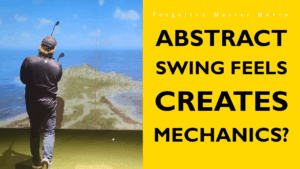
Abstract Golf Beats Mechanics – Feel Over Technique
Abstract Golf – What the H*ck do I Mean? Being too mechanical and overly internalized makes both the game and performance suffer. Most importantly, it takes you out of the moment and makes you…
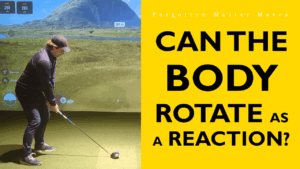
Automatic Body Rotation – A Natural Result of the Right Intentions
Automatic Body Rotation – An Outcome of using the Swing Arc There are many different swing styles, but the classic golf swing was built around one key principle—utilizing the swing arc. If you are…
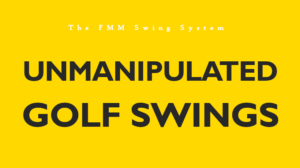
Unmanipulated Golf Swings = Your Natural Stock Shot
Unmanipulated Golf – the Holy Grail? If you know how to generate and accelerate power effortlessly, you’re on the verge of playing unmanipulated golf. One of the biggest advantages is developing a natural stock…
General Article Collection Pages

All Articles Library – All Creations in One Place
Everything I’ve created over the years. You have different filterings according to the list below. Wish to watch Youtube videos instead? Then click here to open Wish to visit my Skillest Profile (coach app)?…
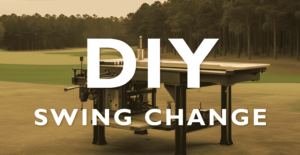
DIY Swing Change – Advice on How to Successfully Change
Do It Yourself, DIY Swing Change, is what has driven me the last decade in my golf swing development. The absolute enjoyment of figuring out a swing change myself. To all of you out…
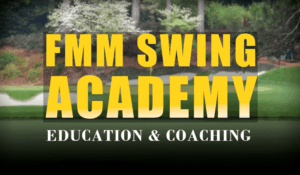
FMM Swing Academy – 3 Release Styles. 3 Swing Patterns
FMM Swing Academy Almost everyone who plays golf wants to get better and tries to get better, but doesn’t get better. Why? Let’s look at what differentiates a good golfer from a not-so-good golfer….

Golf’s Best Systems – Much Needed Golf Technique Context
I categorize golf motion styles into systems for the sake of clarity and understanding. No golfer fits perfectly into a single system, but without a structured framework, you’re essentially shooting in the dark. These…
Old School General Articles
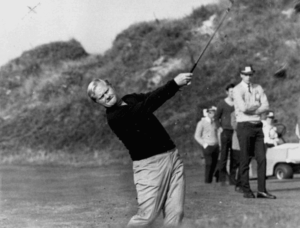
Why Jack Nicklaus Swing Work – Free of Modern “Rules”
Most people have Ben Hogan as their swing god, and sure, he’s awesome, but my personal favorite will always be Jack Nicklaus Swing. The Golden Bear. It’s the simplicity and effortless feel of it…
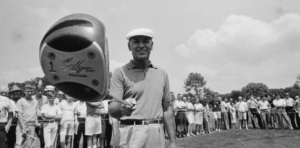
Ben Hogan Swing Rebuild – The Breakthrough That Changed Golf Forever
Nothing in golf quite compares to Hogan’s dominance in the 1940s and 1950s. The Ben Hogan swing rebuild, which he eventually shared through Five Lessons and other insights, shook the golf world—but without the…
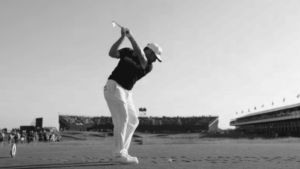
Old School Swinging Elements on Tour – A Modern Case Study
Modern top tier golfers definitely display old school swinging elements of the old greats. These swing styles are making their way back to the leaderboards today. How to spot Old School Swinging Elements? Once…